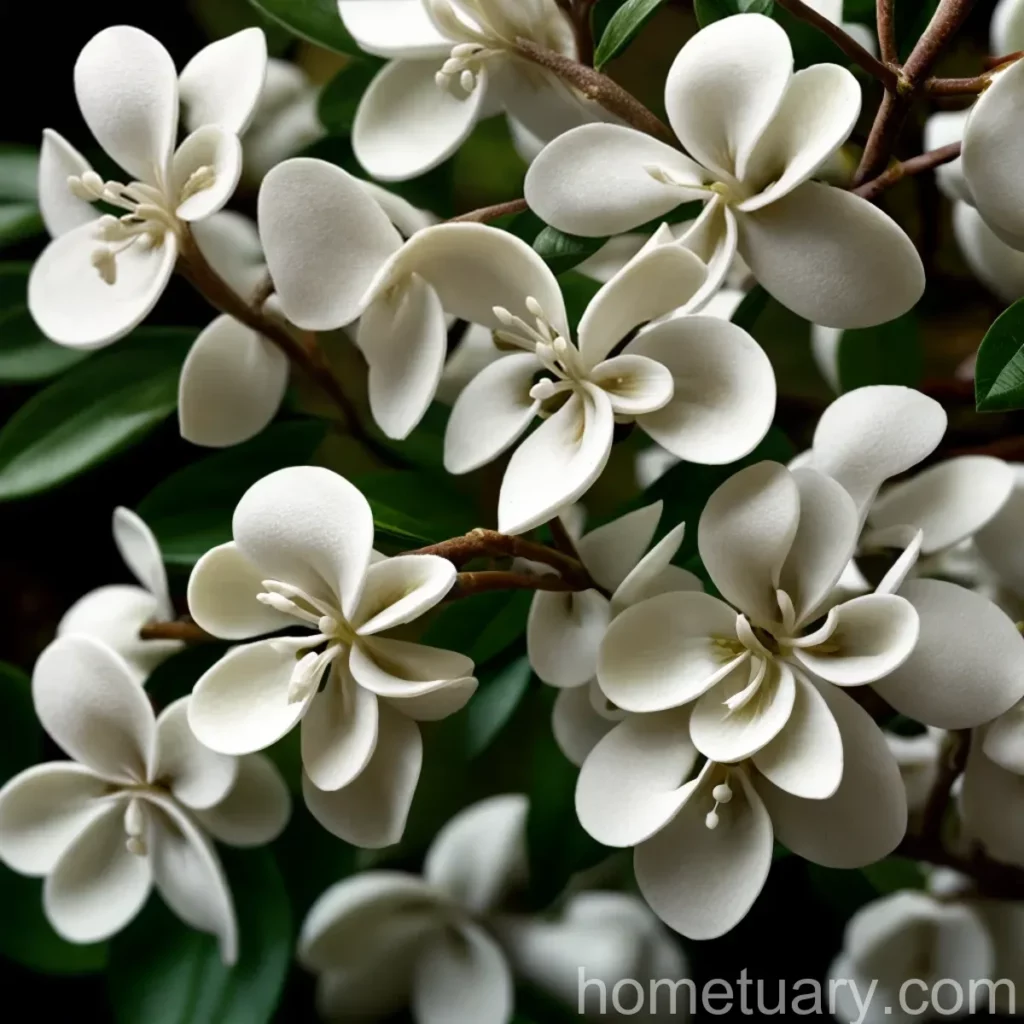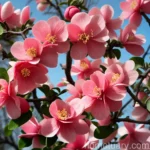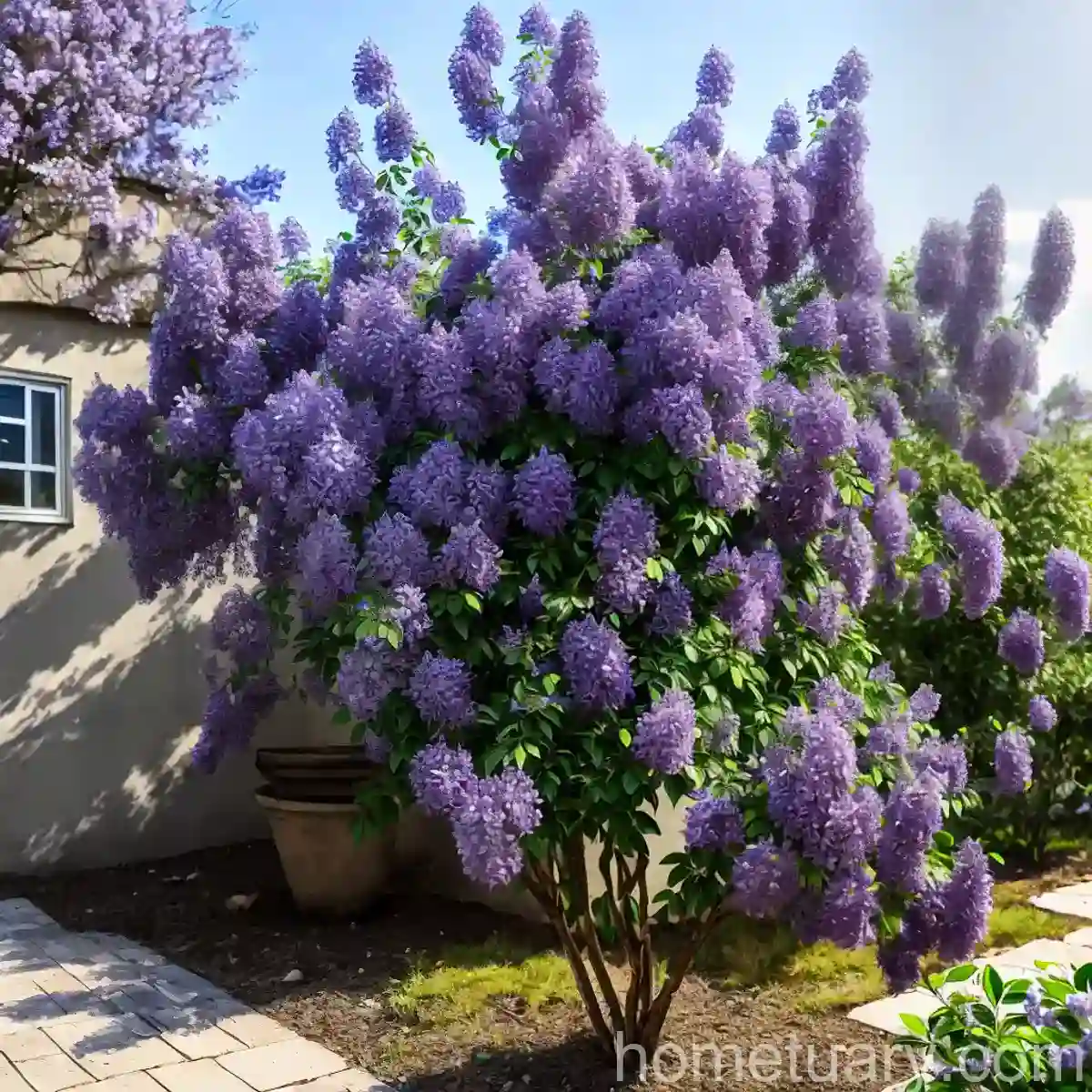The Fascinating Pearlbush (Exochorda serratifolia)
Introduction
When it comes to adding a touch of elegance and charm to gardens, parks, and landscapes, few plants can rival the pearlbush (Exochorda serratifolia). This stunning deciduous shrub is renowned for its abundant clusters of delicate, pearl-like flowers that adorn its branches in spring. As a plant scientist with a passion for horticulture, I am thrilled to delve into the world of this captivating species and provide valuable insights into its care, uses, characteristics, and much more. Join me on this journey of discovery as we explore the pearlbush in detail and uncover its secrets to thriving in various settings.
What is the Pearlbush (Exochorda serratifolia)?
The pearlbush, scientifically known as Exochorda serratifolia, is a member of the Rosaceae family and is native to central China. It is a deciduous shrub that typically grows to a height of 6 to 10 feet, with a similar spread, making it an ideal choice for adding vertical interest to garden landscapes. The plant is characterized by its arching branches, glossy dark green foliage, and an abundance of showy, pearl-like white flowers that emerge in spring, creating a breathtaking display.
Key Takeaways
Before we delve further into the world of pearlbush (Exochorda serratifolia), let’s highlight some key takeaways about this exquisite plant.
Culture
- Scientific Name: Exochorda serratifolia
- Common Names: Pearlbush, Common Pearlbush, Pearlbush Exochorda
- Plant Type: Deciduous Shrub
- Native Range: Central China
Uses
- Ornamental: Ideal for gardens, parks, and landscapes
- Aesthetic Importance: Adds elegance and charm
- Wildlife Attraction: Attracts pollinators and beneficial insects
Water
- Watering Needs: Moderate
- Drought Tolerance: Moderate
Sunlight
- Sun Exposure: Full sun to partial shade
Fertilizer
- Fertilizing Tips: Balanced, slow-release fertilizer in spring
Soil
- Soil Requirements: Well-drained, fertile soil
Pruning
- Pruning Techniques: Light pruning after flowering to maintain shape
- Growth Habits: Arching branches, upright stance
Propagation
- Propagation Methods: Softwood cuttings, layering
Container Popularity
- Container Gardening: Suitable for large containers
Common Diseases
- Disease Prevention: Proper air circulation, sanitation
Disease Diagnosis: Powdery mildew, leaf spots
Common Pests
- Pest Control: Regular inspection, insecticidal soap
Botanist’s Tips
- Leaf Identification: Glossy dark green, serrated edges
- Flower Arrangement: Abundant, pearl-like white clusters
- Leaf Coloration: Vibrant green
Fun Facts
- Flowering Season: Spectacular display in spring
- Wildlife Habitat: Attracts birds, butterflies, and bees
- Medicinal Uses: Traditional medicinal plant in some cultures
Now that we have a comprehensive overview of the pearlbush, let’s dive deeper into each aspect of caring for and appreciating this remarkable plant.
Pearlbush Care
Planting
When it comes to planting the pearlbush, selecting the right location and providing optimal growing conditions are essential for its long-term health and vibrancy. Here are some key considerations for planting Exochorda serratifolia:
- Pearlbush Varieties: The most commonly cultivated variety is Exochorda serratifolia ‘The Bride’, known for its profusion of white flowers.
- Landscaping: Ideal for borders, woodland gardens, and as a focal point in landscapes.
- Seasonal Care: Spring or fall is the best time for planting to allow the roots to establish before extreme weather sets in.
Maintenance
Proper maintenance is crucial for ensuring the health and beauty of pearlbush shrubs. Here are some essential maintenance tips to keep them thriving:
- Watering: While pearlbushes have moderate drought tolerance, they benefit from regular watering, especially during dry spells. It’s important to ensure that the soil remains consistently moist but not waterlogged.
- Fertilizing: Apply a balanced, slow-release fertilizer in spring to provide essential nutrients for healthy growth and abundant flowering.
- Pruning: Light pruning after flowering helps maintain the desired shape and encourages new growth.
- Disease Prevention: Regular inspection for signs of diseases and pests, along with proactive measures, such as ensuring proper air circulation and sanitation, can help prevent common issues.
Soil and Sunlight
The pearlbush thrives in well-drained, fertile soil and is adaptable to various soil types. Additionally, it can tolerate full sun to partial shade, making it a versatile choice for different garden settings.
Propagation and Container Gardening
For those interested in propagating pearlbushes or incorporating them into container gardening, softwood cuttings and layering are effective propagation methods. The plant’s moderate size makes it suitable for large containers, adding an elegant touch to patios, terraces, and other outdoor spaces.
Landscaping with Pearlbush
The pearlbush’s aesthetic importance cannot be overstated, as it offers a multitude of landscaping possibilities. Here are some creative ideas for incorporating this stunning shrub into landscape design:
- Borders: Create striking borders with pearlbushes, where their abundant white flowers can make a bold statement.
- Woodland Gardens: Utilize pearlbushes to add brightness and elegance to woodland garden settings, complementing other shade-loving plants.
- Focal Points: Use the pearlbush as a focal point in the landscape, drawing attention to its captivating spring display.
- Companion Plants: Pair pearlbushes with other spring-flowering plants and shrubs to create visually appealing combinations.
Maintaining a Healthy Pearlbush
Disease Prevention and Pest Control
While the pearlbush is relatively resistant to diseases and pests, it is essential to remain vigilant and take preventive measures to maintain its health. Common diseases such as powdery mildew and leaf spots can be addressed through proper cultural practices and, if necessary, targeted treatments. Regular inspection for pests, such as aphids and spider mites, can help address potential issues before they escalate.
Fun Facts and Botanist’s Tips
As a plant enthusiast, I cannot help but share some fascinating fun facts and botanist’s tips about the pearlbush:
- Flowering Season: The spectacular display of white, pearl-like flowers during spring is a sight to behold, creating a captivating visual impact.
- Wildlife Attraction: Pearlbushes attract a variety of beneficial wildlife, including birds, butterflies, and bees, contributing to the overall biodiversity of garden landscapes.
- Medicinal Uses: In some cultures, parts of the pearlbush have traditional medicinal uses, highlighting its cultural and historical significance.
- Foliage and Flowers: The glossy dark green foliage, with its serrated edges, provides a beautiful backdrop for the abundant clusters of white flowers.
- Leaf Identification: The vibrant green leaves with serrated edges make the pearlbush easily recognizable in garden settings.
Conclusion
In conclusion, the pearlbush (Exochorda serratifolia) stands as a remarkable plant that combines ornamental beauty, ease of care, and ecological significance. Its elegant appearance, from the glossy foliage to the profusion of pearl-like flowers, makes it a standout choice for gardens, parks, and landscapes. By understanding its preferences for water, sunlight, soil, and maintenance, enthusiasts can ensure that it thrives and continues to enchant with its springtime display year after year.
I hope this exploration of the pearlbush has provided valuable insights into the care, uses, and unique characteristics of this beautiful shrub. Whether you are an avid gardener, a landscape designer, or a nature lover, the pearlbush undoubtedly has much to offer in terms of aesthetic appeal and ecological value.
As we continue to appreciate and cultivate diverse plant species, the pearlbush serves as a shining example of nature’s capacity to inspire and enrich our surroundings. Let’s continue to nurture and celebrate the beauty of plants like the pearlbush, while recognizing their importance in creating vibrant and sustainable environments.















